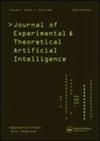基于神经网络的多视角增强多学习者主动学习:理论与实验
IF 1.7
4区 计算机科学
Q3 COMPUTER SCIENCE, ARTIFICIAL INTELLIGENCE
Journal of Experimental & Theoretical Artificial Intelligence
Pub Date : 2021-07-09
DOI:10.1080/0952813X.2021.1948921
引用次数: 4
摘要
随着神经网络在我们日常生活中的应用越来越多,它们的实用性和准确性越来越受到挑战,因为它们被应用于近似通常由不同依赖或独立视图组成的更复杂的函数。当函数的复杂性和要逼近或模拟的视图数量增加时,任务变得更加复杂和困难,因为它最终可能危及分类器的准确性并使结果不可靠。本文研究了一种改进的主动学习方法,称为增强型多学习器(EML),通过在一组学习器中分配模拟任务的复杂性,其中每个网络负责学习特定视图,从而促进神经网络对复杂函数的近似或模拟。我们尝试通过神经网络实现EML来解决传统方法无法提供足够结果的复杂问题。这些实验研究在三个不同的领域进行,在这里进行总结。每个实验还提供遗留解决方案,并对结果进行比较。实验结果表明,基于EML的神经网络在处理复杂的模式识别问题方面具有优势。本文章由计算机程序翻译,如有差异,请以英文原文为准。
Neural network-based multi-view enhanced multi-learner active learning: theory and experiments
ABSTRACT As applications of neural networks increase in our daily lives, their practicality and accuracy become more of a challenge as they are applied to approximate more complicated functions typically composed of different dependent or independent views. While the complexity of the functions and the number of views to be approximated or simulated increases, the task becomes more complicated and more difficult in that it may eventually jeopardise the classifier’s accuracy and make the results unreliable. This paper surveys an improved active learning method called Enhanced Multi-Learner (EML) to facilitate the approximation or simulation of complex functions via neural networks by distributing the complexities of the task under simulation among an array of learners where each network is responsible for learning a specific view. We experimented with EML realisations through neural networks to solve complex problems where traditional methods did not provide adequate results. These experimental studies were conducted in three different domains and are summarised here. Legacy solutions were also provided in each experiment, and the results were compared. The experimental results indicate the superiority of EML base neural networks in dealing with sophisticated pattern recognition problems.
求助全文
通过发布文献求助,成功后即可免费获取论文全文。
去求助
来源期刊
CiteScore
6.10
自引率
4.50%
发文量
89
审稿时长
>12 weeks
期刊介绍:
Journal of Experimental & Theoretical Artificial Intelligence (JETAI) is a world leading journal dedicated to publishing high quality, rigorously reviewed, original papers in artificial intelligence (AI) research.
The journal features work in all subfields of AI research and accepts both theoretical and applied research. Topics covered include, but are not limited to, the following:
• cognitive science
• games
• learning
• knowledge representation
• memory and neural system modelling
• perception
• problem-solving

 求助内容:
求助内容: 应助结果提醒方式:
应助结果提醒方式:


